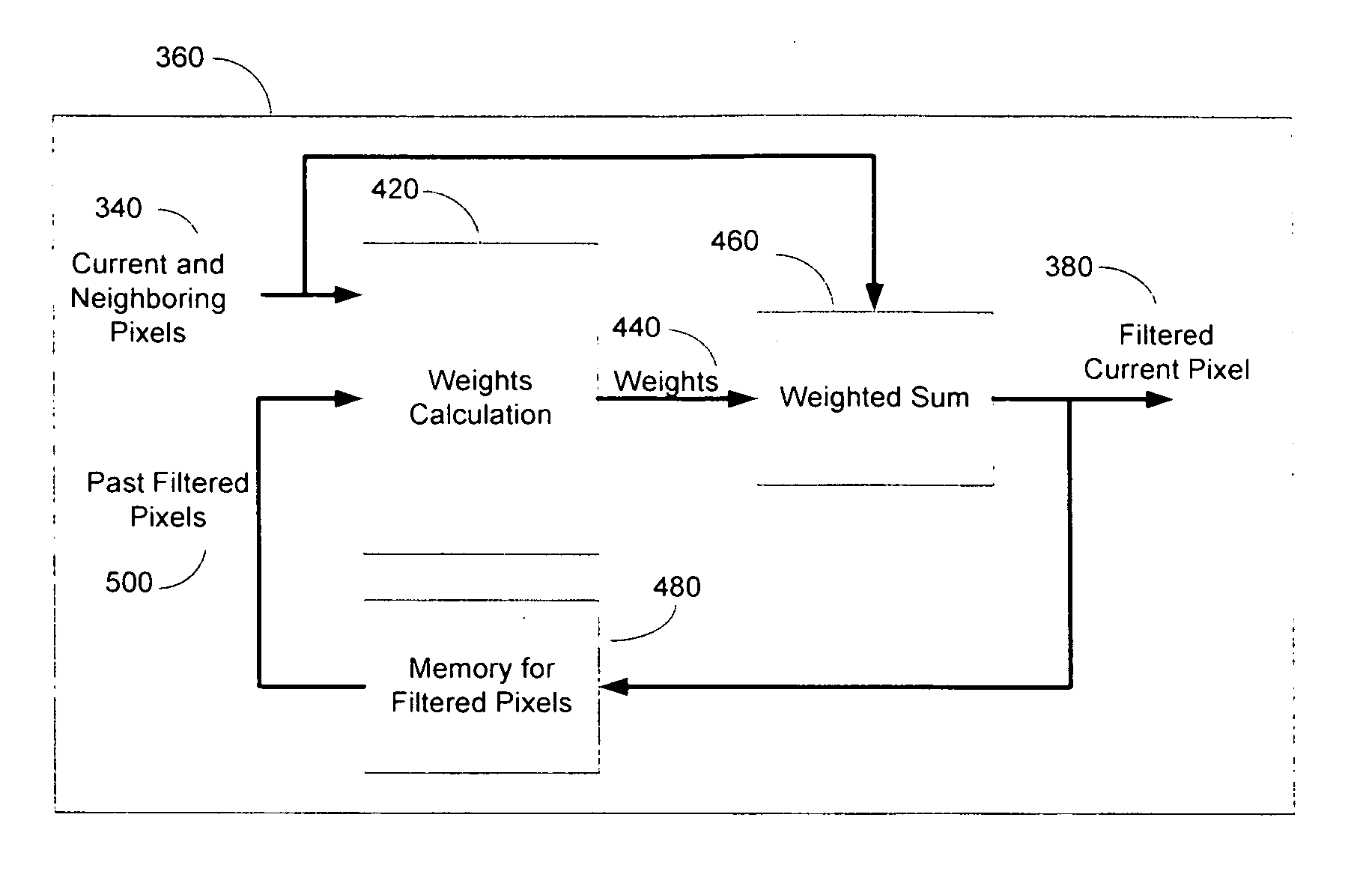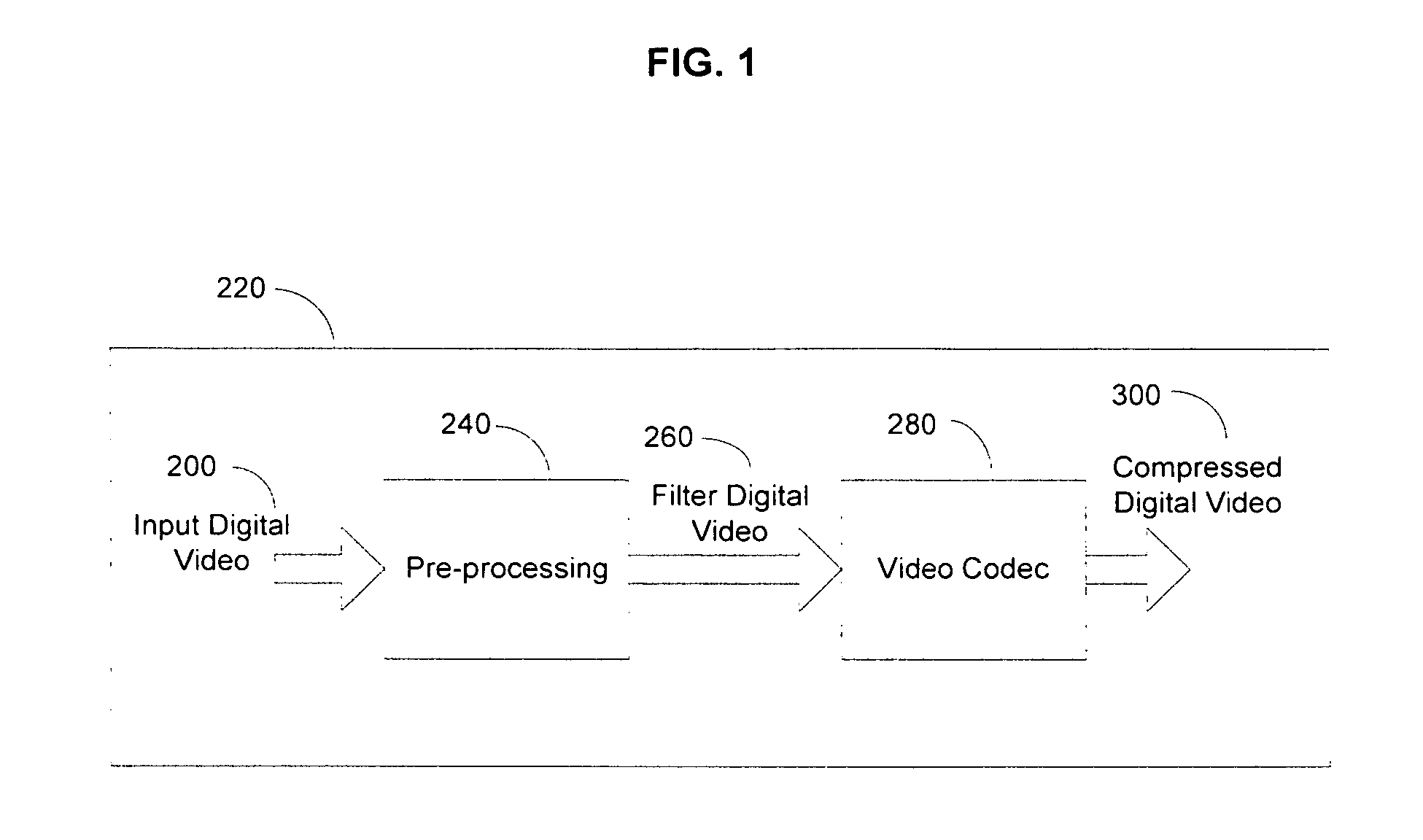Auto-regressive method and filter for denoising images and videos
a technology of image and video denoising and auto-regressive method, applied in the field of denoising technology for digital images and videos, can solve the problems of reducing the performance of video coding, degrading the visual quality of video, and usually affecting the quality of images and videos, so as to reduce spatial noise, reduce noise, and reduce noise. the effect of high efficiency
- Summary
- Abstract
- Description
- Claims
- Application Information
AI Technical Summary
Benefits of technology
Problems solved by technology
Method used
Image
Examples
Embodiment Construction
SVF
[0029] The present method and system is an extension and an improvement of the existing SVF (spatial varying filter) disclosed in “Fast ad-hoc Inverse Halftoning using Adaptive Filtering”, Proc. Of IEEF int. Conf on Acoustics, Speech Processing, Vol. 6, pp. 2279-2282, March 1999. The publication (the SVF paper hereinafter) is incorporated herewith in its entirety for the purpose of providing background information to appreciate the subject matter of the present method and system.
[0030] The SVF filter is based on a set of calculations using Equations (1)-(4) as provided below. In Equation (1), the filtered output y(i, j) is weighted sum of the input x( i, j) and the neighboring pixels. This filter can be applied on luminance and chrominance pixels. y(i,j)=∑(k,l)∈Na(i+k,j+l)·x(i+k,j+l)(1)
[0031] Where x(i,j) is the (i,j)th pixel of the image, a(i+k,j+l) is a spatial varying filter coefficient, which is determined by the function of absolute pixel difference using Equation (2)-...
PUM
 Login to view more
Login to view more Abstract
Description
Claims
Application Information
 Login to view more
Login to view more - R&D Engineer
- R&D Manager
- IP Professional
- Industry Leading Data Capabilities
- Powerful AI technology
- Patent DNA Extraction
Browse by: Latest US Patents, China's latest patents, Technical Efficacy Thesaurus, Application Domain, Technology Topic.
© 2024 PatSnap. All rights reserved.Legal|Privacy policy|Modern Slavery Act Transparency Statement|Sitemap



